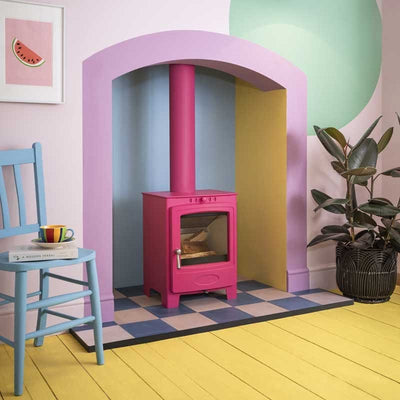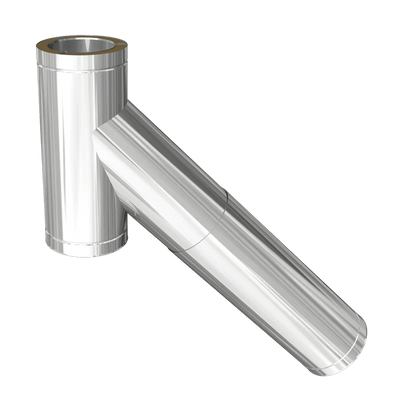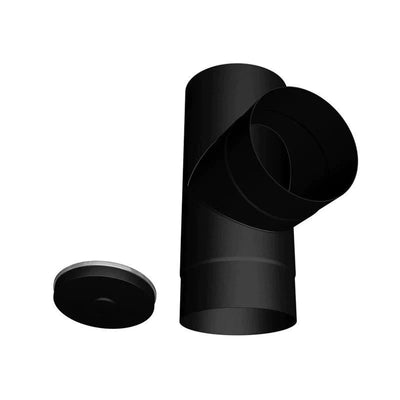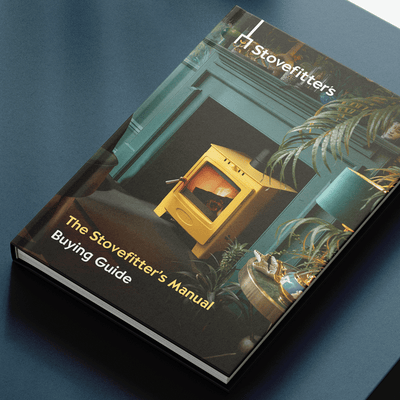Should I insulate my chimney flue liner?
5 mins
Should I insulate my chimney flue liner?
What is liner insulating?
One can insulate a flexi liner by blanket-wrapping it with a suitable material before inserting it (Chimwrap etc.) or by pouring Vermiculite, Perlite or Leca granules into the gap between the liner and flue after fitting.
Image: Liner with blanket wrap of top two thirds of liner. Large inglenook meant Vermiculite/Micafill was not a good idea.

Do I need to insulate when I fit a chimney liner?
If the chimney is exposed (on an outside wall), or the stack is particularly tall, or the flue is of a large diameter then the answer to the proposed question is often "it is a good thing to do but not imperative. Insulated liners keep the flue gases warmer, increase the upward speed of those gases and help prevent condensation forming on the liner. Cooling gases also slow down and “dam” the rising hot air underneath, this can cause puffs of smoke to exit via the air vents of your stove (the vents designed to let air into the stove).
But read on...

Having said the above I have fitted plenty of liners in huge chimneys in exposed locations (top of Welsh mountains) and never had a problem.
Otherwise it is not necessary, especially if the majority of the chimney is internal within the building. The air between the liner and the chimney wall will insulate the liner (air is a good insulator) although the liner obviously touches a cold wall in many places. Adding a blanket wrap makes a reasonably stressful job super stressful if not impossible (unless the chimney is without doubt of sufficient size to cope). Adding Vermiculite or Micafill can cause damp problems (don't do it).
Vermiculite or Micafill when insulating a liner?
Vermiculite or Micafill: I have my reservations about these methods. This stuff absorbs and retains water so if your chimney leaks water at all the insulation material will gradually get wetter, absorbing like a sponge. This can promote damp walls in rooms that previously were problem free.
Update 26 Sept 2018
I am a member of an installers forum. A recent discussion on the forum was 95% in favour of NEVER using poured insulation in a chimney. Lots of installers have had problems with damp.
Blanket type wrap is fine albeit very heavy making fitting very difficult.
There is NO Building Regulation that says you must insulate a liner. However regulations do state that gases must be safely taken away from the building so in theory a stove could be tested on site and could fail this hurdle if the draw of the chimney does not reach the figure stipulated by the stove manufacturer (it is possible to test chimney draw but from my limited experience in these matters a chimney would not fail this test if a liner is fitted, with or without insulation).
Update Monday 24th February 2014
I have just had a long chat with the Hetas Technical helpline regarding lining and insulating. I was prompted to call the helpline following a call from a fellow Hetas engineer (in his first two years on the job) who had received advice that he was unsure about (unsure only because the subject had not been covered in his training course).
The Hetas engineer had been informed by a Hetas inspector that he should always conduct a full “smoke test 1” (smoke test one) on a chimney prior to installing a liner and granular insulation. This is not something I have done in the past and so I was surprised.
The Hetas Technical Helpline said that this was information that can be found in a British Standard and was now being promoted, as good practice, by Hetas. The reason for this was a number of instances where Hetas engineers had filled chimneys with granular insulation only to find out that it poured into next door’s fireplace due to gaps in the “feathers” (wall between tow flues), three instances over Christmas I believe. I was told that Hetas engineers would soon receive an update about this.
Granular insulation – consider it but do you really need it? In my own home I would generally not bother unless the flue was massive – and then I would use Chimwrap. Talking to a few other Hetas engineers reveals that over 95% of installs are completed without any insulation and one engineer I know refuses to add granules due to the possibility of dampness getting into the insulation.
Back to smoke testing before adding the liner. I can see the sense of smoke testing if granules are to be added. It would be bad news to find granules pouring into next door’s house (especially if mixed with soot and ending on a beige carpet).
Smoke tests with party walls can be difficult – both parties have to agree and both houses accessed during the test. I was advised by Hetas to read The Party Wall Act and will do so shortly (fun).
The second item raised by the Hetas installer was that the inspector told him that he should always mix his granular insulation with mortar (6:1 granules to mortar). My reaction to this is one of horror as I believe that if you were to do this then you never be able to retrieve that liner from the chimney. I asked the chap on the Hetas Technical Helpline about this and he said that he would never advise to add mortar for the very same reason (so conflicting advice). Many articles on the Internet say to add mortar but I would never do this to my own chimney (or anybody elses) and have never done this.
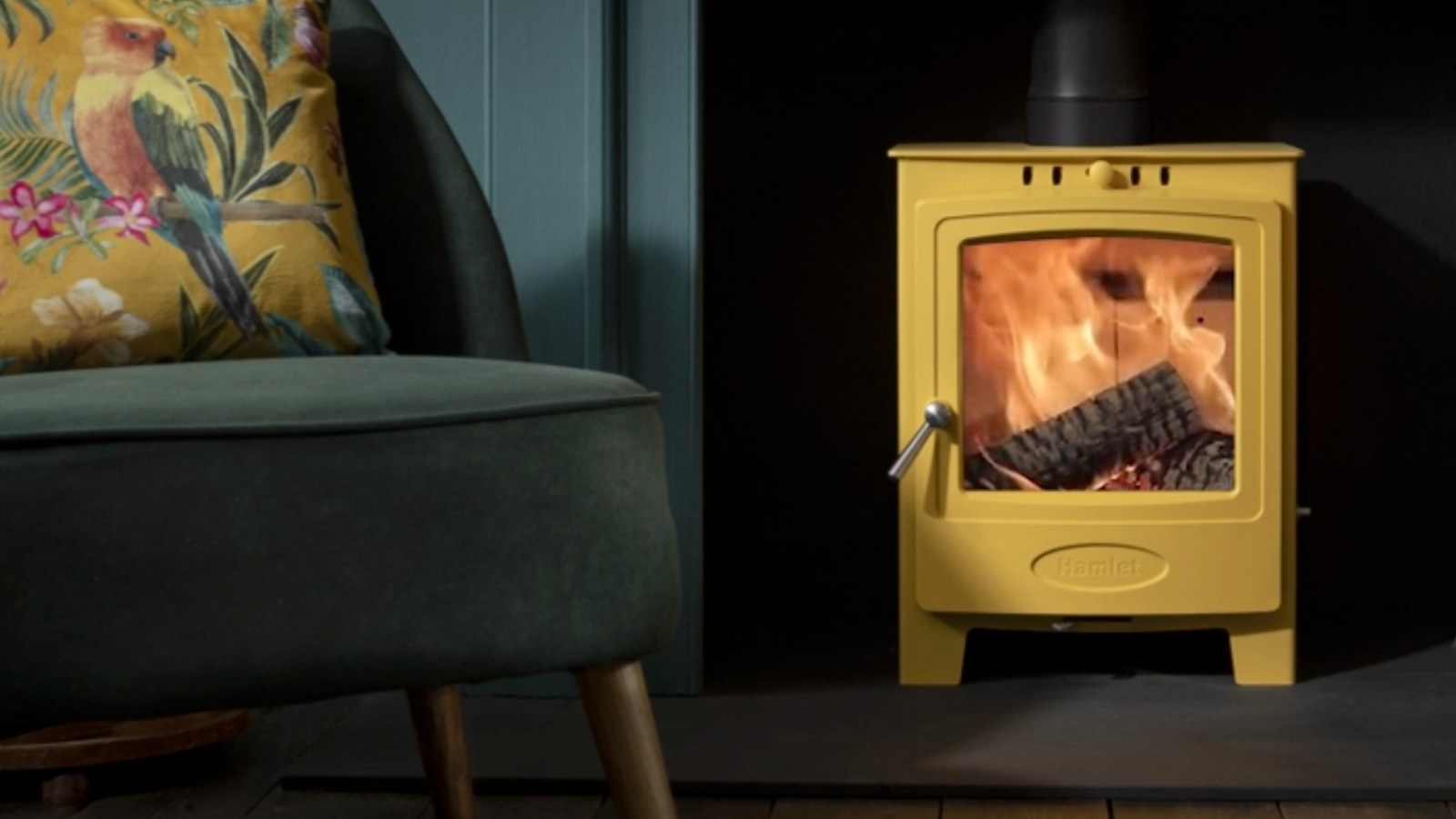

How to choose chimney liner & how much to buy


Installing a stove in a fireplace - what do I need?
Other articles you may find useful
The Stovefitter's Manual
FAQs
See all FAQsCosts correct as of April 2023:
Approx. costs if you have a chimney and fireplace ready to use: £750-£1,000 (save £500 by self-installing).
Approx. costs if you have a chimney but need the fireplace "opening up": £1,600-£2,200 (save £1200 by self-installing).
Approx. costs if you do not have a chimney and need a clip-together flue: Shed £475-£700. Bungalow £1500. 2-storey house £2500. Save £1,000-£1400 by self-installing.
Above figures include labour and materials but no appliance.
We, of course, advise you to purchase your stove and materials from Stovefitter's to ensure quality goods are installed (some installers use budget materials to increase margin). If you buy your stove from us (rather than your local small shop or installer) we have a lot more power when approaching manufacturer's with a warranty issue. Why is that? Because we buy many hundreds of stoves a year from these brands.
We do not fit stoves.
But we know a few who do!
Google: Hetas installers
Hetas are the trade body of registered UK installers.
Most installations will require that you slide a chimney liner down your chimney (flexible metal tube 5" or 6" in diameter). Do you have a narrow chimney and want to lessen the risk that a liner might not go down your chimney? Then make sure your chosen stove can use a 5" liner.
Must I line my chimney? Best read this article but most likely the answer is yes. Do I have to fit a chimney liner?
DEFRA-Exempt wood burning stoves with a 5″ collar can usually be fitted to a five inch liner rather than the usual 6″ minimum, making the installer's job much less stressful.
ALL OF THE 5KW STOVES WE SELL CAN BE FITTED TO A 5" CHIMNEY LINER.
I seriously suggest any self installer fits a 5" liner unless they know their chimney is large enough for a 6"!
What is the best chimney liner? Silvacore 904 (we sell it so of course we will say that ;-). What is the best chimney liner?
Useful links
Will your stove require an air vent within the room (some stone walls are very difficult to drill)?
5kW or under and wood burning stoves often do not require an air vent (new builds always require an air vent).
Useful links
What is the maximum output in kW of your "5kW" wood burning stove? The majority of manufacturers just specify the “nominal output” and this figure means very little in real life. The nominal is a figure the manufacturer chooses to sell the stove at - the stove is capable of reaching at least this output with one fuel load. Nominal means "capable of". But it is not the maximum.
Check out the size of the area where the logs will go (firebox size) as this varies enormously. The kW output is completely dependant on the amount of logs burning at any one time - more logs burning equals more heat. If you can fit three logs in stove A and just two logs in stove B then stove A will be capable of throwing out 33% more heat.
DO NOT TRUST MANUFACTURERS’ kW RATINGS as manufacturers specify what output they desire to sell the stove at and testing allows for much “playing with the figures”. This is why you can get very small 5kW stoves (e.g. Aga Little Wenlock) and very large 5kW stoves (e.g. DG Ivar 5 by Dik Geurts which is actually rated 5kW but has a MUCH larger firebox than the Ekol Crystal 5 by Ekol Stoves). A Crystal 5k might get to 5kW and not be capable of any higher whilst a DG Ivar, despite being rated at 5kW, can get to 8kW with a full fuel load.
Note that, over time, one might damage the internal firebricks of a stove by running at a higher load than the manufacturer's suggest. Firebricks are easily replaceable.
Useful links
Will your wood burning stove fit in your recess WITH the required air gaps around it? This is obviously not an issue if your stove will be freestanding.
Air gaps to non-combustible materials (brick, stone etc.) are usually "as close as you like" legally but manufacturers will sometimes specify a recommendation. This recommendation is there to allow heat to escape from the recess into the room - so you get the heat benefit rather than the heat soaking into the building structure and being lost. If no gap to non-combustibles recommended then we suggest 50-100mm air gap left and right of stove, 50mm behind and 100mm above.
Are you in a Smoke Control Area (usually built up areas)?
Choose your stove accordingly.
A stove must be DEFRA-Approved if you wish to burn wood in a smoke control area.
ALL OF THE STOVES WE SELL ARE DEFRA APPROVED FOR SMOKE CONTROL AREAS.
In simple terms if a stove has an efficiency rating of 70% then 30% of the heat from your logs goes up the chimney.
If a stove has an efficiency rating of 90% then only 10% goes up the chimney.
So think of this in terms of how many logs you have to chop/buy.
Example: A Saltfire Peanut 5 by Saltfire Stoves in Dorset has an efficiciency of 80%.
A tall chimney (6m or more) that is lined will be happy with an efficient stove.
Efficiency importance can be said to be overrated and anything between 75% and 85% is fine. Go much higher and performance can actually suffer (smoke in room when opening door to reload, blackening of glass).
Many modern stoves can go on 12mm thick hearths. Others require full, 5″ thick constructional hearths. All of the stoves we sell state whether or not a 12mm hearth is suitable.More about hearths for wood stoves here.
Helpful links
Can you can talk to somebody on the phone should you need to after the wood burning stove has been delivered, especially if you are self installing? Will the staff at “wesellzillionsofstoves.com” be able to assist with any installation issues? What if there are any problems after install?
Do yourself a favour before ordering stoves or materials on the Internet: Go to Trustpilot and type in the company name before you buy. Some companies advertising at the top of search engines are not good news - check for yourself.
When striving to find thebest 5kW wood burning stovesyou will likely be bewildered by the choice. There are many to choose from. The question I get asked most in our shop is “why should I pay <£1,000> for this one when this other one is just <£500>?”. Here is the very simple answer:the cheaper wood stoves are made in Chinaor Eastern Europe whilst the more expensive are made in Western Europe (or sometimes the USA). Here are a few examples where a more expensive stove might excel over a cheaper stove:
- Aesthetics (more time spent on design)
- Hinges (sometimes hidden on more expensive stoves)
- Better quality glass
- Thicker steel (longer life)
- Improved door locking mechanisms
- Longer warranty
- Improved controllabilty of flame due to more resource invested on design of air flow within stove
- Brushed steel fittings instead of cheapy chrome look
Open and close the door on a cheap Chinese stove. Then open and close the door on a DG stove, Arada stoves, Woodford stoves, Hamlet stoves or Saltfire stoves. You’ll understand the difference.
Stove pricing reminds me of wine pricing. A £20 bottle of wine is not double the quality of a £10 bottle of wine (the drinking experience might be improved by 20% as an example). We are talking “the law of diminishing returns here. They are all “fire in a metal box” at the end of the day.
Yes. However, there are specific regulations and restrictions in place to address air pollution concerns, particularly in areas designated as Smoke Control Areas. In these areas, only approved "smokeless" fuels or exempt appliances, such as Defra-approved wood-burning stoves, can be used. These stoves are designed to burn wood more efficiently and produce fewer emissions.
All the stoves we sell are DEFRA approved and Eco-design approved and suitable for all areas of the UK.
Terminology
View all TerminologyA stainless steel tube, slides down a brick/stone chimney to provide a smooth and safe route for smoke.
All of our stoves are approved by DEFRA to burn wood in all UK locations including Smoke Control Areas (towns and cities). Not all stoves are, so be careful if buying elsewhere.
All of our stoves are ECODESIGN approved to be sold in the UK. Not all stoves are, so be careful if buying elsewhere. ECODESIGN is mandatory by law since January 2022.
The base your stove sits on.
If the chimney is the polo mint then the flue is the hole.
Buying guides
The Stovefitter's Manual

How to choose a wood burning stove for your property (includes infographic)
Infographics

What size wood stove do I need? Don't let manufacturers fool you!
Buying Guides

Do I need an air vent for a wood burning stove? If I do not bother?
Buying & DIY

Knowledge Tree: Process of buying and installing a wood burning stove
Buying & DIY

Chinese wood burners – should I buy one or are they all crap?
Buying Guides

What else do I need to buy to install a wood burning stove?
DIY Guides

Infographics for wood burning stove purchase and install
Infographics

Wood burning or multifuel stove? A stove fitter decides.
Buying Guides
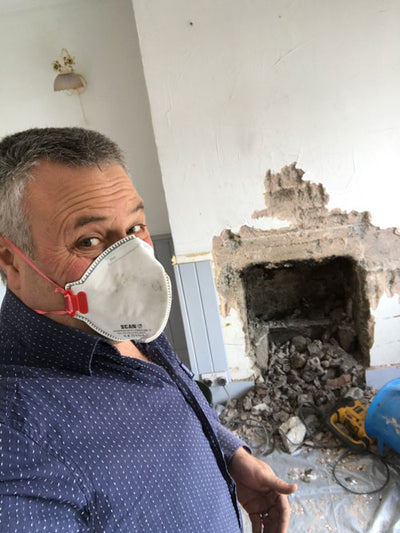
A few words from Julian
Buying & DIY


Find my perfect stove
Answer 3 simple questions and we will show you the best Stoves for your space.




